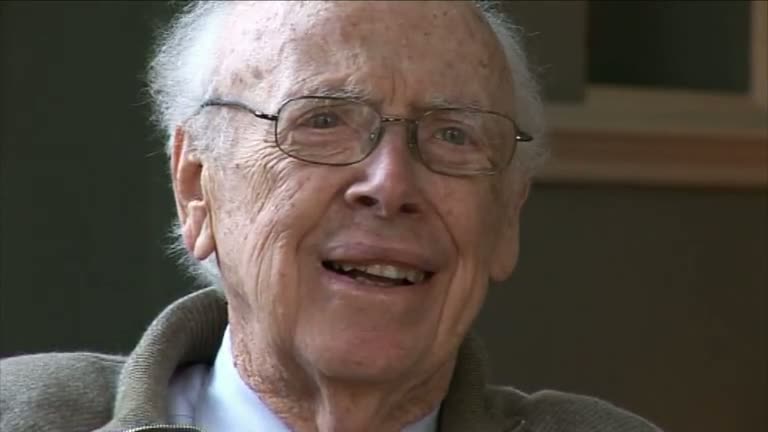There were ideas for new ways of sequencing - high throughput, low cost sequencing which would greatly reduce the cost of sequencing. And in - sometime, I think it was in the fall of 2004 I got a visit from a young entrepreneur/inventor, Jonathan Rothberg, who had formed a company called 454 in New Haven. It was his second biotech company. And he asked for my DNA, could he sequence me so that I would be the first person whose genome was done. And I said yes, but I didn't want to know whether I was at risk to Alzheimer's disease, so I said that you could release all my DNA sequence except my apolipoprotein E one which was - if I had two copies of it, I probably already by then had Alzheimer's. And so I worried whether I had one copy because my grandmother had Alzheimer's. And so I said, you can just put it up. And then I didn't think about it at all. And until the late Fall two years later- or no, I think it was January, they came and told me that they had already sequenced half my DNA and the other half would be done a month later, it was going to take some two months to sequence me. And the company 454 had been bought by Roche, so it was Swiss-owned. But the, it was still located in New Haven with the same technical people. Jonathan had left it. And it turned out that it was early June of 2007 when I went down to - and then in assembling the sequence, they had got the help of the Baylor Genome Institute. There were three main sequencing centers finally in the United States: one at MIT, the Broad Institute; at St Louis, Washington University Genome Center; and then Houston at Baylor College of Medicine. And so the genome group at Baylor, led by the Australian-born Richard Gibbs, helped in the assembly of the - of my genome, comparing it always to the reference genome. So I went there in an early day in June and I had the reassurance that I was then 79 years old and I wasn't likely to, you know, worry if the, you know - I had already lived a full life. But they told me I had mutations in three DNA repair genes, which if I'd known when I was 20 I would have, you know, thought, well, I'm going to be an early victim of cancer. So I wouldn't have liked that knowledge at that time. They didn't find any, you know, well know genetic disease for which I was heterozygous, like cystic fibrosis, I had a one in 25 chance of carrying on allele of it, which would have been useful to know 'cause I could then tell my son Duncan he should check himself. He would have a 50% chance of having, you know, my bad allele. So I saw the sequence as a way of being useful to him, to warn him that he should test regions [?]. They told me initially I had a mutation in my BRCA1 DNA. The gene became very famous for its greatly increasing the susceptibility to breast cancer. So I worried that - my sister had had breast cancer so maybe that was the reason she'd had it, therefore I should notify her daughters that they might be carrying it. But before I did, I had the sequence looked at by Marie-Claire King, who was - had first mapped the breast cancer gene to chromosome 17 and even though the company Myriad had first cloned the gene and patented it, she knew well the mutations along the gene. She called me up and greatly reassuring me by saying I didn't have the Jewish variant, which was breast cancer, but I had what she thought was a harmless Irish variant.
American molecular biologist James Dewey Watson was best known for discovering the structure of DNA for which he was jointly awarded the 1962 Nobel Prize in Physiology or Medicine along with Francis Crick and Maurice Wilkins. His long career saw him teaching at Harvard and Caltech, and taking over the directorship of Cold Spring Harbor Laboratory in New York. From 1988 to 1992, James Watson was head of the Human Genome Project at the National Institutes of Health.
Title: Having my own genome sequenced (Part 1)
Listeners:
Martin Raff
Walter Gratzer
Martin Raff is a Canadian-born neurologist and research biologist who has made important contributions to immunology and cell development. He has a special interest in apoptosis, the phenomenon of cell death.
Listen to
Martin Raff at Web of Stories
Walter Gratzer is Emeritus Professor of Biophysical Chemistry at King's College London, and was for most of his research career a member of the scientific staff of the Medical Research Council. He is the author of several books on popular science. He was a Postdoctoral Fellow at Harvard and has known Jim Watson since that time
Duration:
6 minutes, 17 seconds
Date story recorded:
November 2008 and October 2009
Date story went live:
18 June 2010






